Know our Trees
Learn how to recognise some of the common trees of our city.
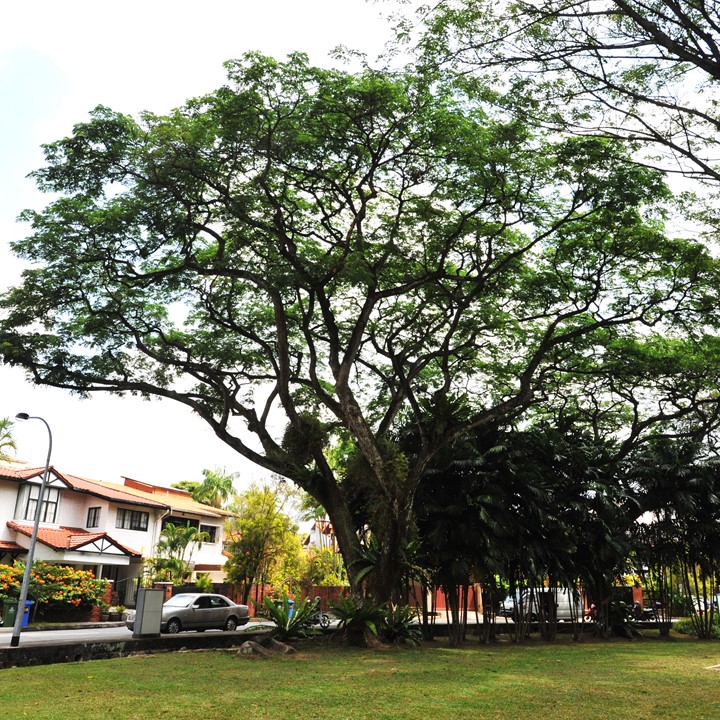
Rain Tree
One of the most iconic trees in our city, the Rain Tree (Samanea saman) can be identified by its distinct umbrella-shaped and wide spreading crown, which creates a “great tunnel” effect when planted in rows along our streets. Its compound leaves fold up at night or during rainy days when the sky is overcast. This South American tree is often confused with another common urban tree – the native Yellow Flame (Peltophorum pterocarpum) – but can be distinguished by its showy white and pink flowers, its larger leaflets (often >2.5cm long), and its dark-brown bark when mature, compared to the Yellow Flame’s yellow flowers, smaller leaflets (<2.5cm long) and lighter grey bark.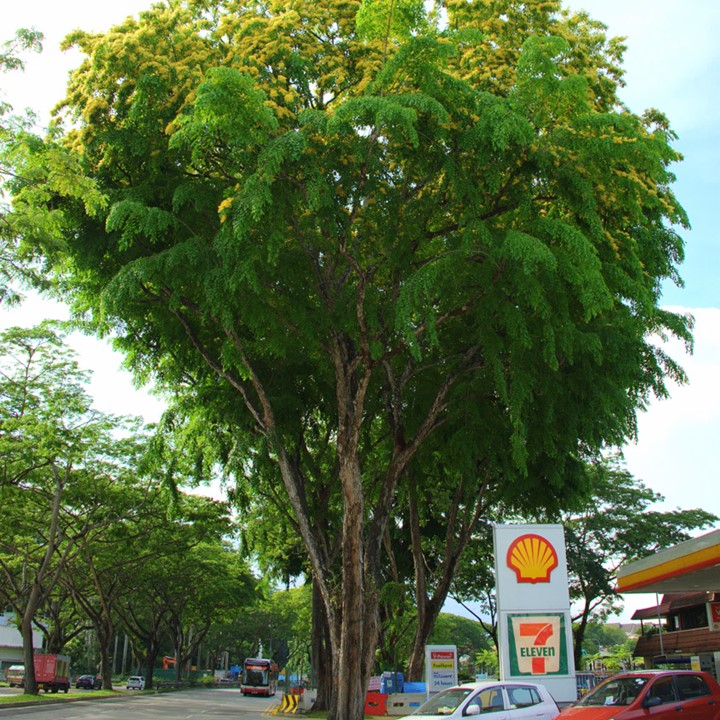
Angsana
The Angsana (Pterocarpus indicus) is one of the early roadside trees introduced to Singapore. This species continued to be widely planted in the 1960s and 1970s; as such, many of them are now of mature size, easily reaching heights of 15-18m. The Angsana grows well in our climate and has become a popular shade tree along our streets. It has become localised and forms part of our heritage trees. The wood of the Angsana has a rose-like scent and is said to be the best fine-furniture wood in Malaysia. When its bark is damaged, the tree oozes a dark red latex that resembles blood. This species can be distinguished by its dense and drooping crown of compound leaves, its yellow flowers which are produced in 15-30cm long bunches, and most of all, its flattened disc-shaped fruits with papery wings (Pterocarpus means “winged fruit” in Latin).
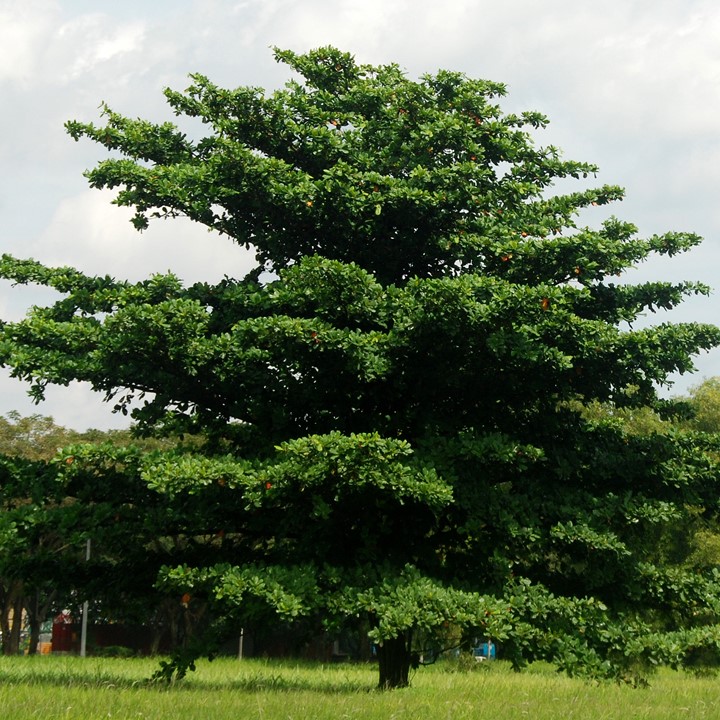
Sea Almond
Another native tree that is commonly planted along our streets and in our parks, the Sea Almond (Terminalia catappa) is a coastal species that can be found naturally along the seashores and in the mangroves of Singapore. This tree is semi-deciduous, and sheds its leaves twice a year. As the leaves wither, they turn from green into a mix of red, orange and yellow, giving an autumnal feel to our tropical city. The Sea Almond can also be identified by its pagoda shape, due to the regularly-spaced tiered branches on its trunk, and its large buttresses. The pulp of the Sea Almond’s fruit is sweet, and its embryo tastes like almond, thus giving the tree its name.
A kaleidoscope of flowering blooms
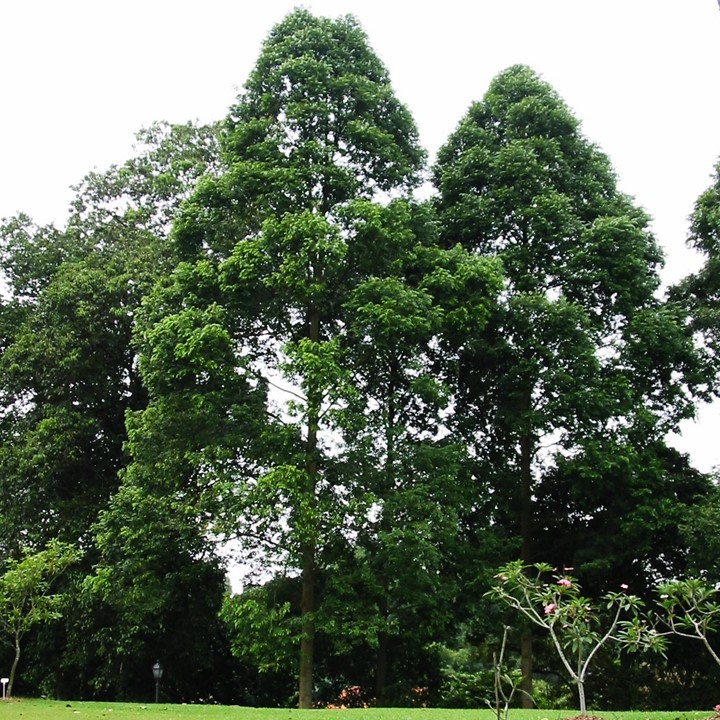
Chengal Pasir
The Chengal Pasir (Hopea odorata) is a tall canopy tree that is native to the primary dipterocarp forests of Southeast Asia. It is also a hardy species that is well-adapted to urban environments. Like other trees in the dipterocarp family, the Chengal Pasir produces winged fruits that are dispersed by wind only once every few years. The wood of the Chengal Pasir is hard, heavy and durable, making it suitable for timber. This tree can be recognised by its very straight and upright form, its strongly cylindrical trunk, and its dense dark-green crown.
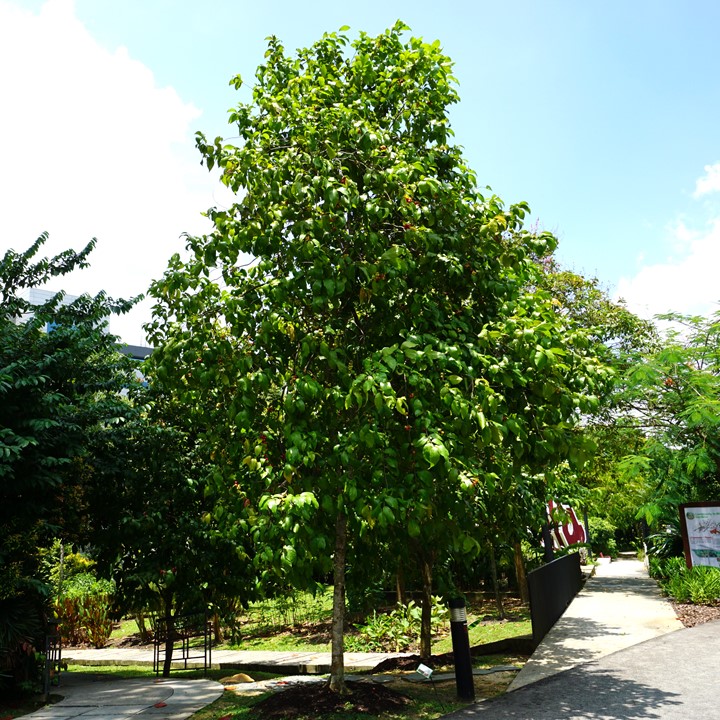
Batoko Plum/Thornless Rukam
A small yet striking tree, the Batoko Plum (Flacourtia inermis) is instantly recognisable due to its pink and reddish young leaves, and its bright red berries that are around 2-2.5cm in diameter. Its leaves also have a distinctive “toothed” margin. The Batoko Plum is grown in certain parts of the world for its berries, which are too sour to be eaten raw, but make good tarts, jellies and jams. This tree is also often utilised in butterfly-attracting gardens and landscapes. It is the host plant for the orange-coloured Leopard Butterfly (Phalanta phalantha), which is commonly seen flitting around wherever the trees are planted.
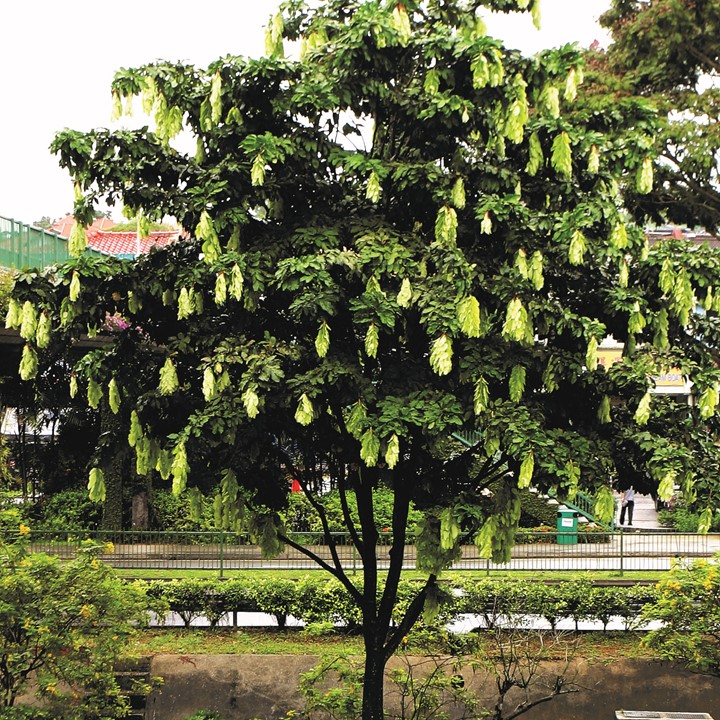
Handkerchief Tree
The Handkerchief Tree (Cynometra browneoides) is named after its striking young new leaves, which resemble soft handkerchiefs hanging from all over the tree. The new leaves are produced in limp tassels that are light green to cream in colour, and hang vertically downwards from the tree’s branches. Originating from New Guinea, this medium-sized tree species is now a popular ornamental tree in our city. The Handkerchief Tree can also be recognised by its low-branching form, its dark green compound leaves, and its broad, flat and brown fruit pods.
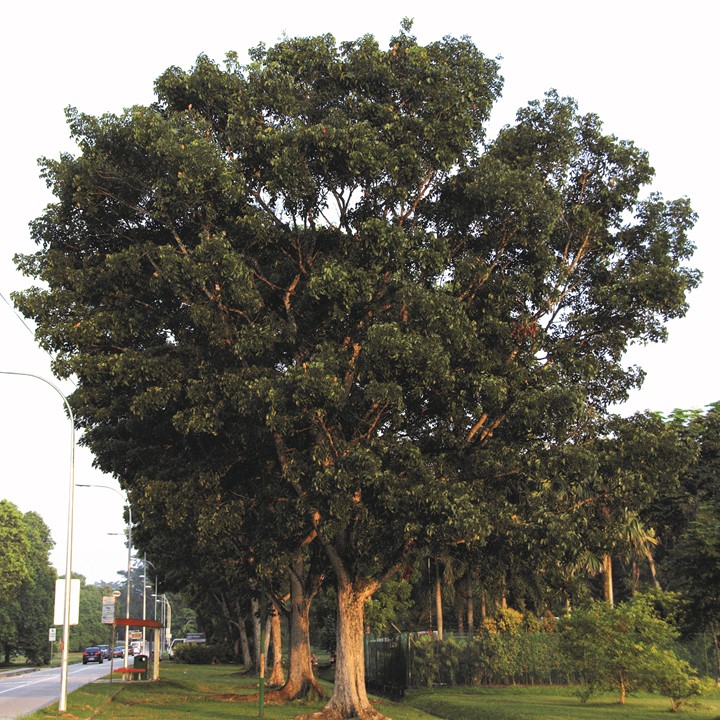
Broad-leafed Mahogany
One of the world’s most outstanding timbers, the Broad-leafed Mahogany (Swietenia macrophylla) is native to South America, where it is becoming increasingly rare. However, this tree is widely-cultivated in many parts of the world due to its importance in the furniture trade. The Broad-leafed Mahogany is also a good shade tree that adapts well to urban environments and is relatively pest-free. Its seeds are said to provide a traditional cure for high blood pressure and diabetes. This common roadside shade tree can be identified by its strongly asymmetrical leaflets, dark-grey and flaky bark, and its large woody fruit pods.
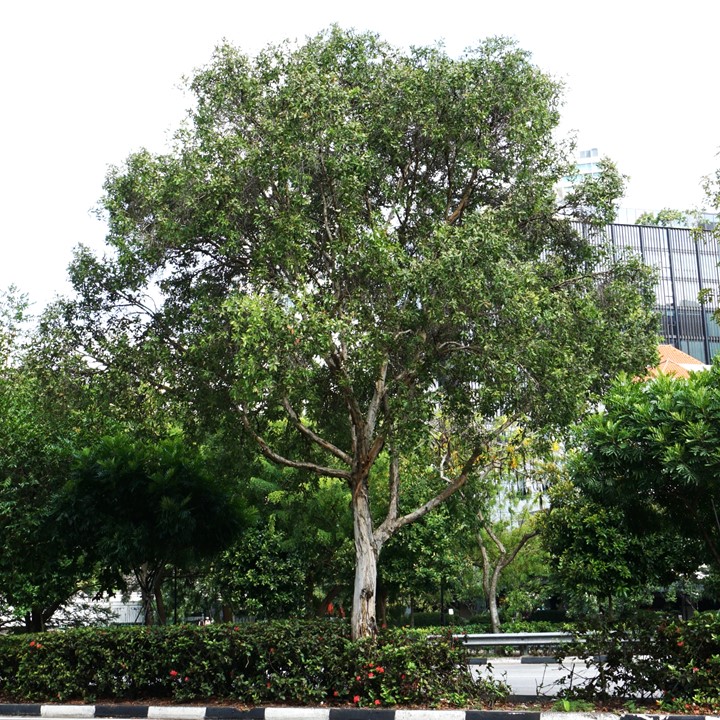
Gelam
Gelam (Melaleuca cajuputi) is a widely-distributed species that can be found in Southeast Asia, New Guinea and even in Australia. Our Kampong Glam is named after this tree! This hardy and fast-growing species can tolerate all sorts of tough conditions, including drought, poor soils, and even fire. Gelam is most easily recognised by its thick, white and papery bark that can be peeled off in large flakes like sheets of paper, thus its other common name – the Paper Bark Tree. Other easily identifiable features of Gelam include its thick leathery leaves which emit a “tea tree” fragrance when crushed, and its creamy-white “spiky” flowers that are frequently visited by sunbirds.
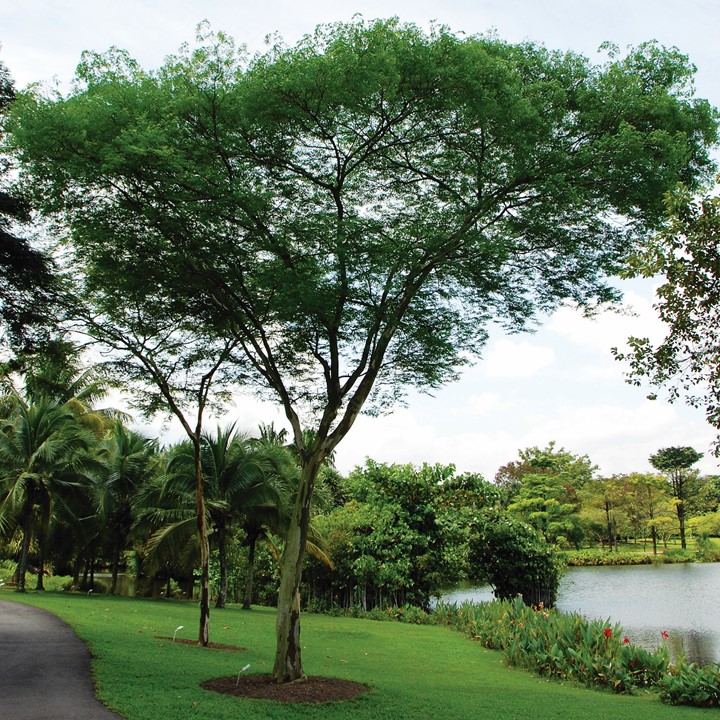
Leopard Tree
The Leopard Tree (Libidibia ferrea) earns its name from its smooth distinctive bark, which is coloured in various shades of grey and yellow, mottled with brown splotches, and peels off in patches with age. The Leopard Tree can also be recognised by its beautiful small yellow flowers, and its feathery-looking leaves. The wood of this tree is very dense and heavy, and an aged block of Leopard Tree wood would actually sink in water, unlike most other types of wood – hence its other common name, the Brazilian Ironwood.
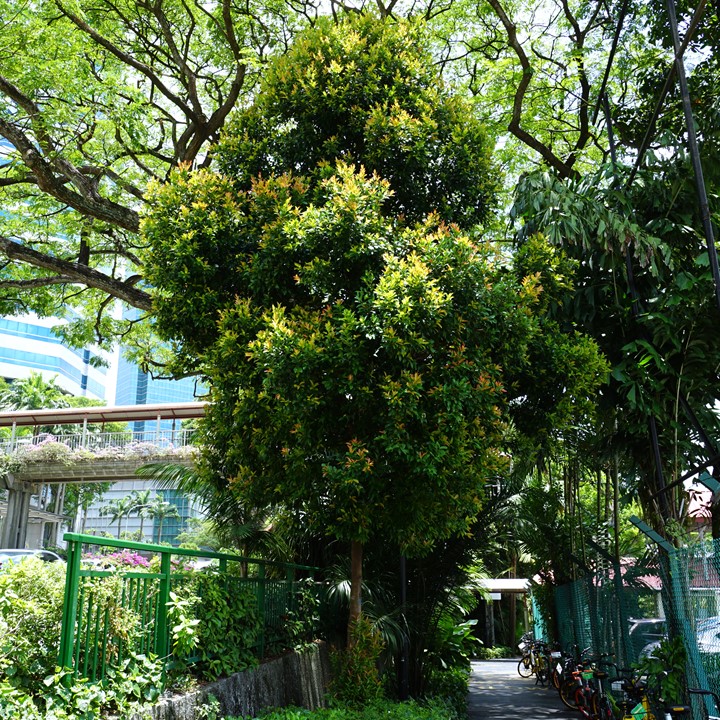
Red Lip
The Red Lip (Syzygium myrtifolium) is a beautiful native rainforest tree that is sometimes also cultivated as a shrub or hedge, due to its compact and dense foliage. This species is easily recognisable by its reddish-orange young leaves (which look like lips), small white powderpuff-like flowers, and small black berries that are less than a centimetre wide. The Red Lip is often planted in ornamental landscapes for its colour, and along large roads and expressways as a screening hedge. The flowers and berries of this tree also provide food for various birds and butterflies.
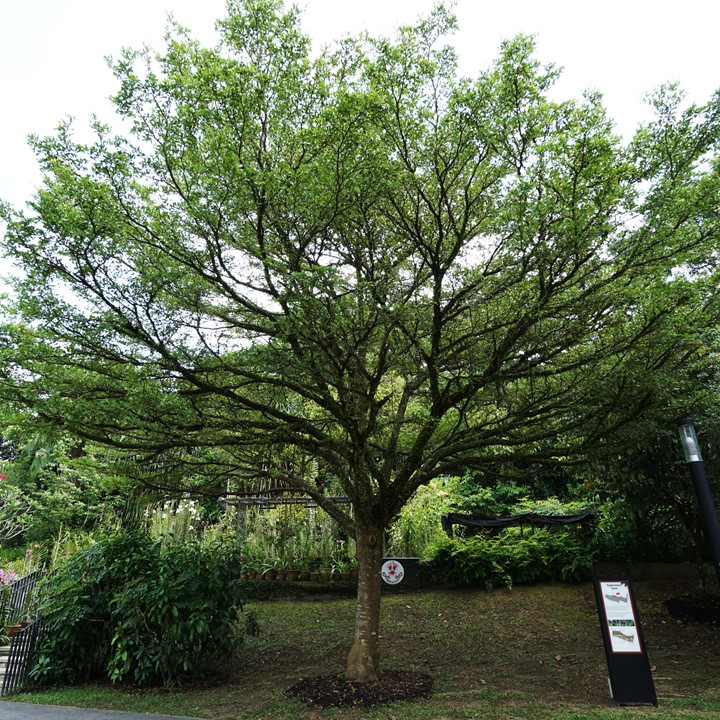
Madagascar Almond/Umbrella Tree
The Madagascar Almond (Terminalia mantaly) is closely related to the Sea Almond, but is distinctly smaller in size, and also produces much smaller leaves. It is extremely popular as an ornamental tree, due to its distinctly formal appearance and neatly tiered structure, and is a favourite amongst landscape designers and architects. The Umbrella Tree is native to Madagascar, where it is also used for reforestation purposes. This tree species rarely flowers or fruits in Singapore.
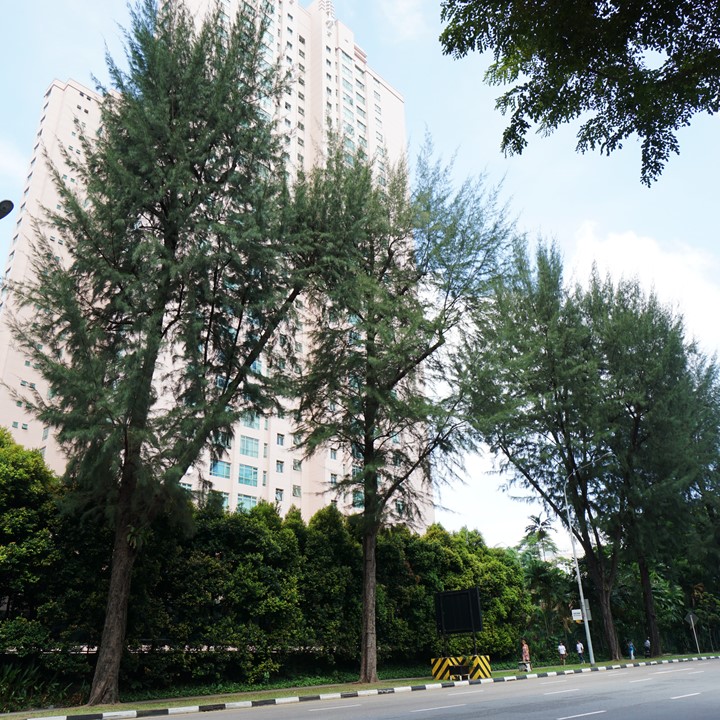
Casuarina
Even though the Casuarina (Casuarina equisetifolia) is frequently mistaken as a “pine tree”, it is actually completely unrelated to coniferous trees! The pine-like leaves of the Casuarina are actually true leaves that have been reduced to scales, and its “pine cones” are true fruits that contain seeds in clusters. The Casuarina is a hardy native tree that grows naturally along sandy coasts, and its roots form associations with soil micro-organisms that are able to fix nitrogen from the air. The wood of the Casuarina is well-known for being extremely hard, strong and heavy, and is used in construction, and as excellent fuel wood in various parts of the world.
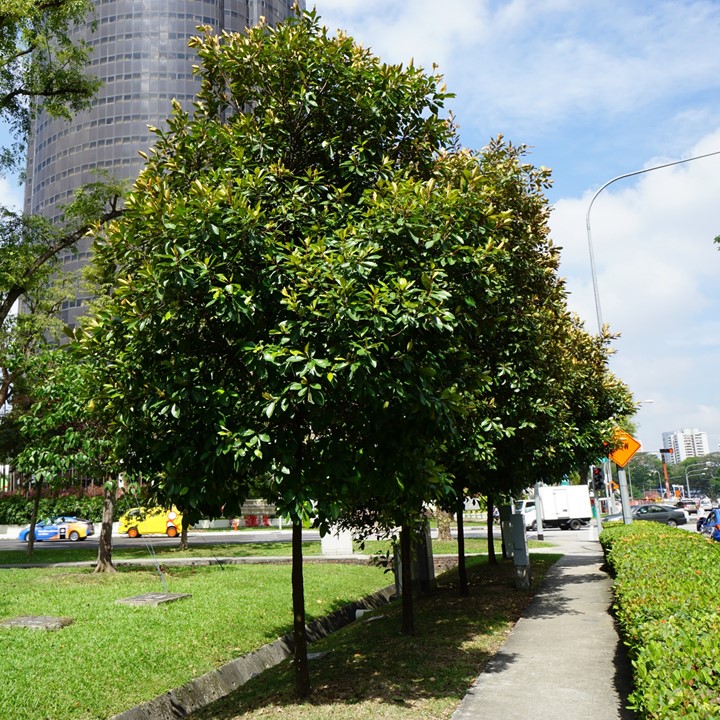
Sea Gutta
Naturally found along rocky and sandy coasts, the Sea Gutta (Planchonella obovata) is a native tree that also grows robustly in urban environments despite their harsh conditions. This medium-sized tree is easily recognisable by its overall bushy appearance, as well as its foliage – its leaves are dark glossy green and hairless on the upperside, but reddish-brown to bronze and hairy on the underside. The fruits of the Sea Gutta are an excellent source of vitamins and minerals – including high concentrations of beta-carotene, niacin and iron.








